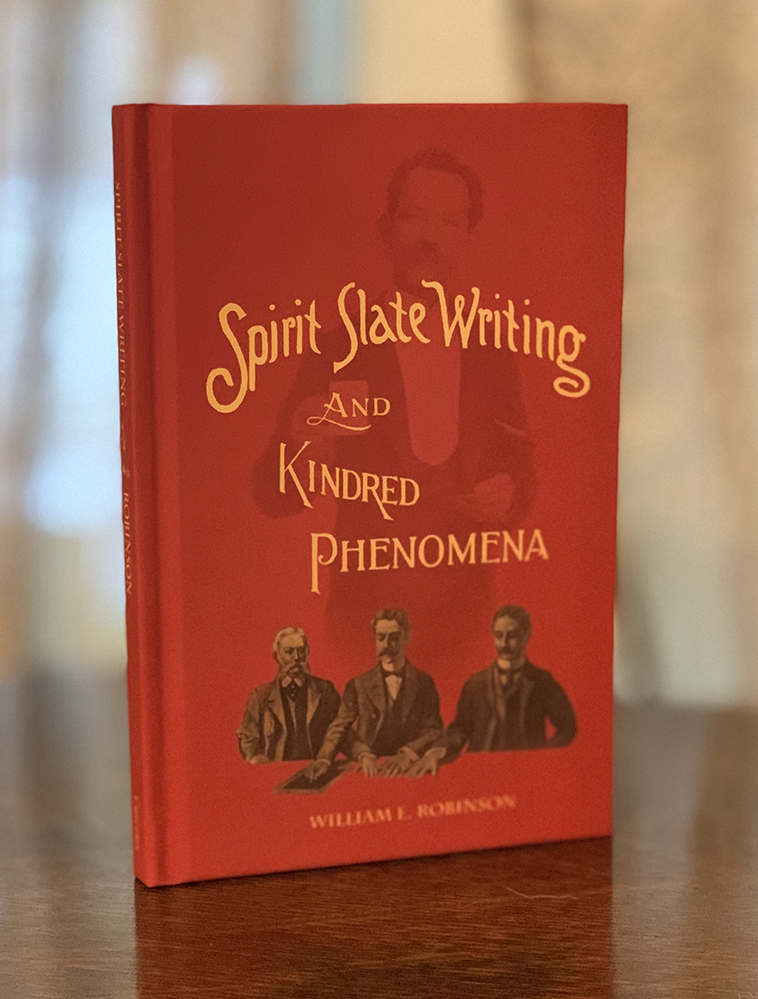
In the late nineteenth century, mediums across the country were busy delivering messages from the dead to anyone who would listen. And there were plenty who would. Often these words from beyond appeared on slates during séances. But the brand of magic that mediums offered was nothing more than that—magic. Author William E. Robinson, an accomplished magician who worked as a stage manager and assistant to Alexander Herrmann and Harry Kellar, knew all the tricks of the trade. His book, Spirit Slate Writing and Kindred Phenomena, published in 1898, explained them all.
This new edition, published by Curious Publications, includes all original sixty-six illustrations, along with an introduction by Henry Ridgely Evans—another turn-of-the-century magician who knew the dead couldn’t talk, except through the preservation of the written word. Just as Evans and Robinson are doing between these covers.
Order yours now (hardcover, $19.99), and learn a few new tricks, or expose that sneaky medium who’s been fooling you.
While you wait, here are a few excerpts to get you started:
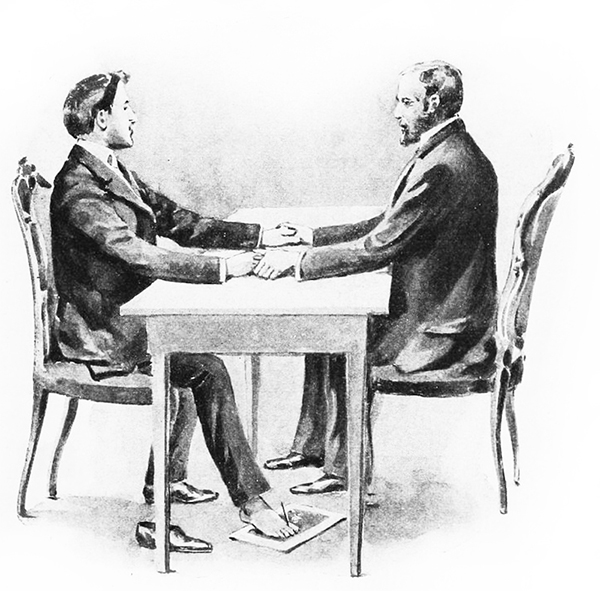
“Here is another test. A slate just cleaned and marked is placed under the table on the floor. The medium and the skeptic grasp each other’s hands across the table. In a few seconds the slate is taken up from the floor and is found with writing on it. The solution of this, like all the rest of the slate phenomena, rests in simplicity and boldness. The medium wears slippers or low-cut shoes, that he can slip his foot out of easily. His stocking on his right foot is cut away so as to leave the toes bare. Now, attached to his great toe is a bit of pencil, and with this the writing is done. (Fig. 17.) Sometimes the test is varied. Five or six pieces of chalk of different colors are on the table, and the investigator is allowed to select one, place it on the slate. In this case the chalk is held between the great and adjoining toe, and the writing is thus produced. It is surprising to see, with a little practice, what you can educate the foot to do. I myself can easily pick a pin off the floor and write quite well. Sometimes, by way of variation, instead of the medium or investigator lifting the slate from the floor, it is seen to mysteriously make its appearance above the edge of the table, being lifted there by means of the toes of the medium’s foot. Another method used is that of scratching the writing on the slate with any metal instrument and then wash the slate on both sides, being careful not to show the scratched side until it is wet from the washing. In this condition a casual glance will reveal nothing, but as soon as the slate becomes dry the writing or scratching appears. Writing has also been made to appear on a slate on the table while the medium and investigator sit with both hands clasped across the table. The medium accomplished this by the simple means of a pencil concealed in his mouth. At the proper moment he holds it between his teeth, leans his head over and writes on the slate. Of course this is all done in the dark, and the writing is not very good, but it answers the purpose, and that is all that is necessary.”
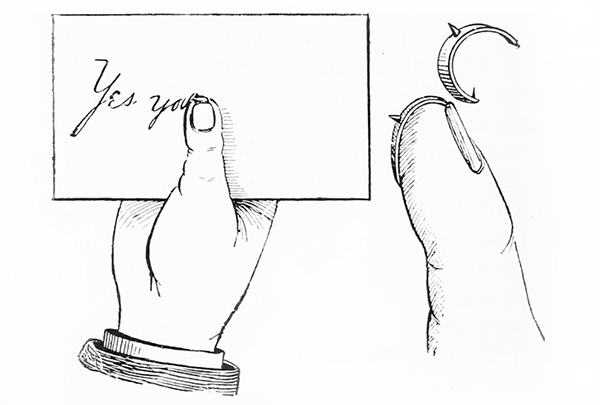
“We now come to a test often employed. A card is given by the medium to a skeptic with the request to write a question on it. The medium now holds the card in his hand against his forehead. Presently he hands the card back to the spectator, and on it, in writing, is found an answer to the question. The medium accomplishes the above feat by means of a little apparatus which is easily attached to the tip of the thumb. Part of it goes under the thumb nail and the lower part has a small needle point which embeds itself in the flesh. In the center of this little apparatus is a tiny piece of lead pencil. With this clever bit of mechanism the medium does the writing with the thumb of the hand holding the card. (Fig. 20.)”
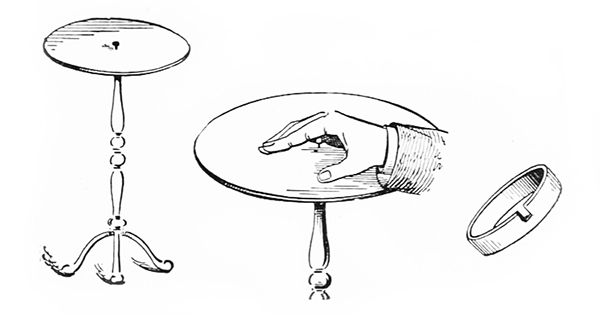
“So much has been heard about table tipping and floating tables, it will, I think, prove interesting to explain a few of the clever devices employed to produce the above phenomena. Small, light tables are lifted by the mere “laying on of hands.” The arms are raised in the air and the table is seen to cling to the hands and follow every motion. This is accomplished by a pin driven well into the table, and a ring with a slot in it (Fig. 27) worn on one of the medium’s fingers. The body of the pin easily enters the slot in the ring, but the head of the pin, being larger, prevents the table from falling away from the hand. After the table has been floated successfully, an extra strong upward pressure of the hand pulls the pin out, and the table can be examined.”
Special thanks to Potter & Potter Auctions for providing the photo of William E. Robinson used in the book.

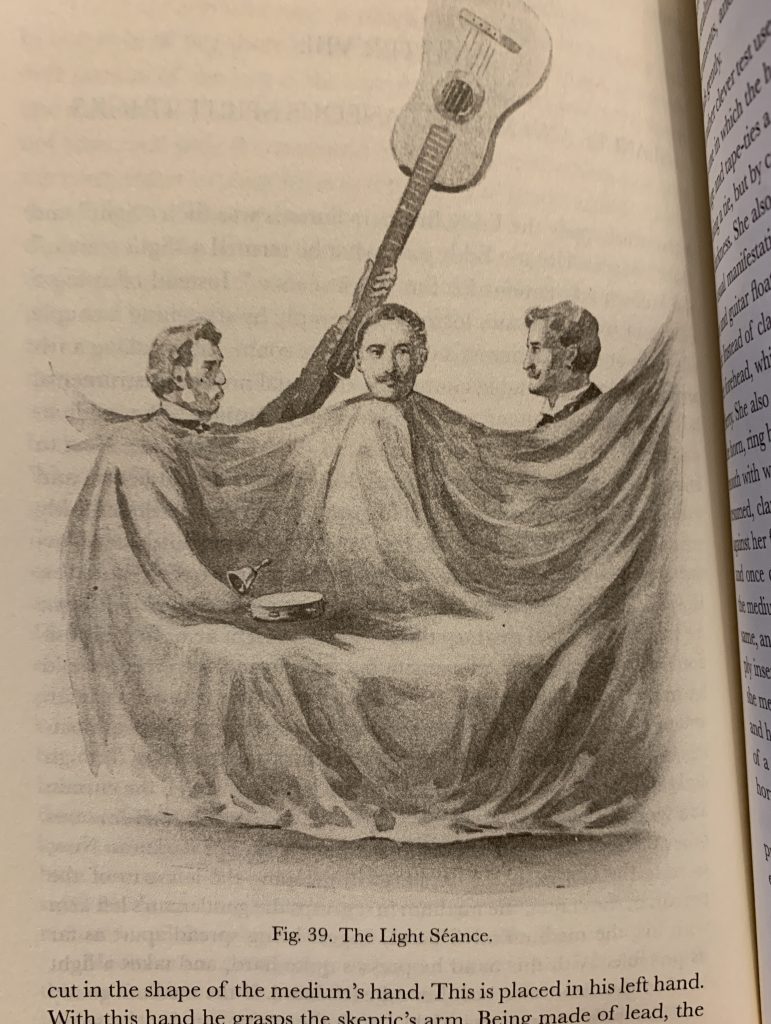
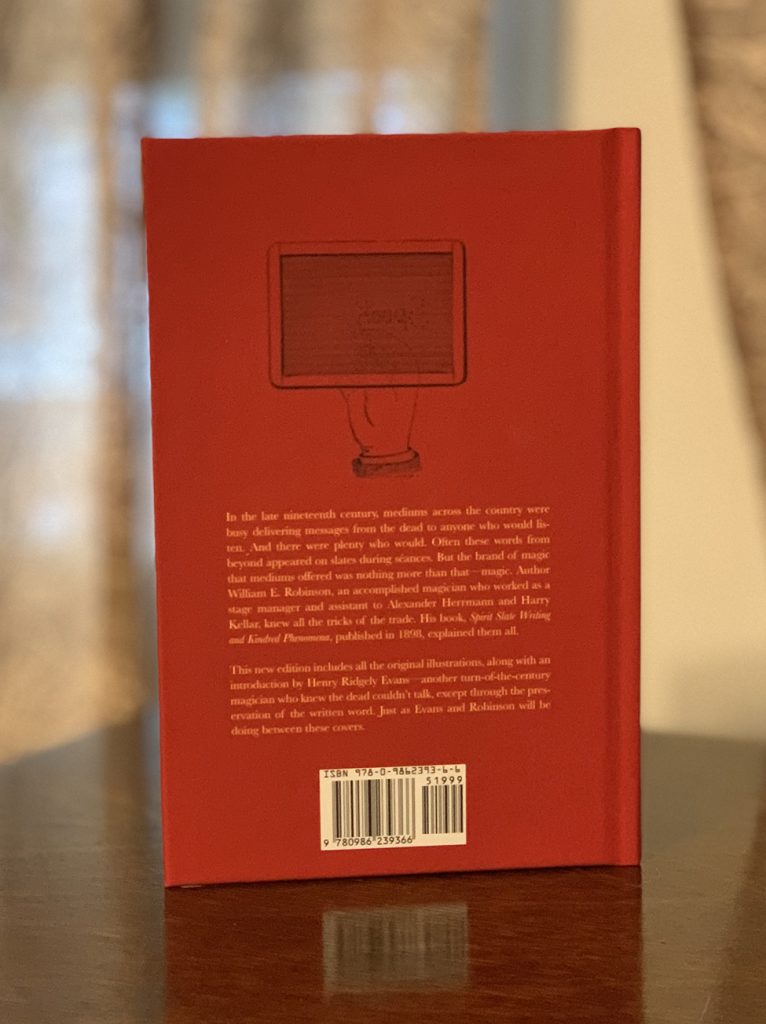
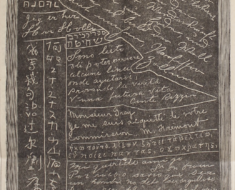
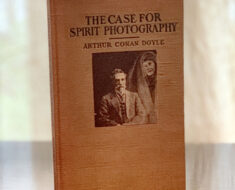
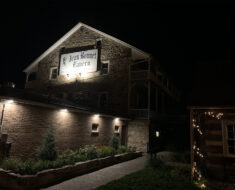
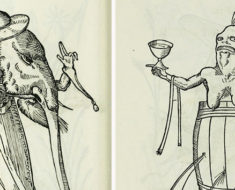

![Ted Serios, by Jule Eisenbud [Public domain], via Wikimedia Commons](https://www.weirdhistorian.com/wp-content/uploads/2017/05/Ted_Serios_1-crop-235x190.jpg)